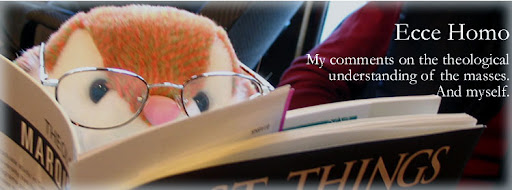Thursday, February 17, 2005
St. Paul's tomb found
An initial survey enabled archeologists to reconstruct the shape of the original basilica, built early in the 4th century. A second excavation, under the main altar of the basilica, brought the Vatican team to the sarcophagus, which was located on what would have been ground level for the original 4th-century building.
Under the altar was a marble plaque was still visible, dating back to the 4th century, and bearing the inscription: "Apostle Paul, martyr." Filippi remarks that surprisingly, "Nobody ever thought to look behind that plaque." When the Vatican team looked, they found the sarcophagus.
As an archeologist, Giorgio Filippi says that he has no special curiosity to learn whether the remains of St. Paul are still inside that sarcophagus. The tomb should not be opened merely to satisfy curiosity, he insists. There is no doubt, he says, that St. Paul was buried on the site, "because this basilica was the object of pilgrimages by emperors; people from all around the world came to venerate him, having faith that he was present in this basilica."
The Vatican archeologist said that Church officials would now have to decide whether to undertake further explorations around the tomb, to make the sarcophagus more visible. Archbishop Gioia, questioned about that possibility, was noncommittal. The prelate affirmed only that he would like to "make known the figure of St. Paul and the historic reality" that he is buried in the basilica. According to tradition, St. Paul died under the Emperor Nero, sometime between the years 64 and 67. The Emperor Constantine began the construction of a basilica on the site of his death, along the Ostian Way, in 386; the building was enlarged and completed a half-century later.
In St. Peter's Basilica, excavations that were begun in June 1939 finally uncovered the tomb of the first Pope in 1941. But it 35 more years before the Church officially attested to the authenticity of those remains, in a statement released by Pope Paul VI in June 1976.
A similar span of years could elapse before the Church confirms that the tomb discovered in St. Paul's Basilica is truly that of the apostle--if such an affirmation can ever be made. But the archeologist whose team discovered the tomb is already convinced.
Under the altar was a marble plaque was still visible, dating back to the 4th century, and bearing the inscription: "Apostle Paul, martyr." Filippi remarks that surprisingly, "Nobody ever thought to look behind that plaque." When the Vatican team looked, they found the sarcophagus.
As an archeologist, Giorgio Filippi says that he has no special curiosity to learn whether the remains of St. Paul are still inside that sarcophagus. The tomb should not be opened merely to satisfy curiosity, he insists. There is no doubt, he says, that St. Paul was buried on the site, "because this basilica was the object of pilgrimages by emperors; people from all around the world came to venerate him, having faith that he was present in this basilica."
The Vatican archeologist said that Church officials would now have to decide whether to undertake further explorations around the tomb, to make the sarcophagus more visible. Archbishop Gioia, questioned about that possibility, was noncommittal. The prelate affirmed only that he would like to "make known the figure of St. Paul and the historic reality" that he is buried in the basilica. According to tradition, St. Paul died under the Emperor Nero, sometime between the years 64 and 67. The Emperor Constantine began the construction of a basilica on the site of his death, along the Ostian Way, in 386; the building was enlarged and completed a half-century later.
In St. Peter's Basilica, excavations that were begun in June 1939 finally uncovered the tomb of the first Pope in 1941. But it 35 more years before the Church officially attested to the authenticity of those remains, in a statement released by Pope Paul VI in June 1976.
A similar span of years could elapse before the Church confirms that the tomb discovered in St. Paul's Basilica is truly that of the apostle--if such an affirmation can ever be made. But the archeologist whose team discovered the tomb is already convinced.



